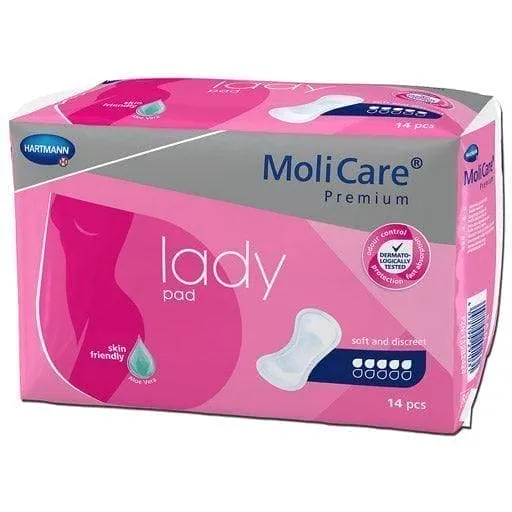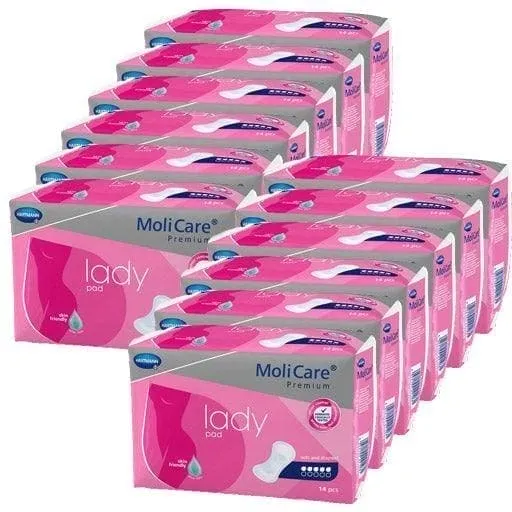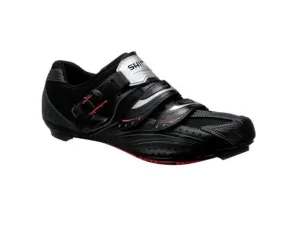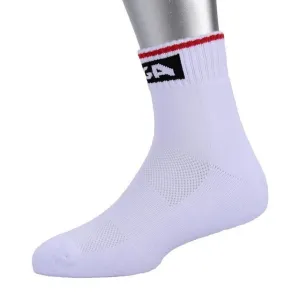MOLICARE Premium lady pad 5 drops
Individual needs - especially for you
Do what you want and what makes you happy - with the new MoliCare ® Premium lady products! If there are any signs of bladder weakness, you should seek competent and sensitive advice at an early stage. With the right insoles or pants you can feel good in your skin again and enjoy your life independently and master challenges.
The new MoliCare ®Premium lady products have been specially developed for the female anatomy and offer the security you want for bladder weaknesses. Fast absorbency, leakage protection and the neutralization of possible odors give optimal security and self-confidence in case of bladder weakness. A pH-skin-neutral distributor pad helps to maintain the natural pH value of the skin and also has an antibacterial effect. The soft material and an aloe vera-treated overlay ensure that it is comfortable to wear. The low waist of the pants, which does not change the body silhouette, and the comfort of fit and wear like underwear round off the advantages of MoliCare ® lady pants. The lady insoles were specially developed for discreet wearing in underwear.
Pants specially developed for women with moderate bladder weakness for all-round protection, discretion and excellent wearing comfort such as underwear.
Stress incontinence - a typical woman's ailment
Many women are familiar with this: small amounts of urine leak during physical exertion, when coughing, sneezing or laughing. Commonly known as bladder weakness, the doctor refers to this form of incontinence as stress incontinence or stress urinary incontinence.
The reason why women suffer from stress incontinence more than men is due to the female anatomy: In the so-called small pelvis, the rectum with the anus, the uterus with the vagina and the urinary bladder with the urethra are located close to each other. The lower part of the front wall of the uterus is fused with the back wall of the bladder. The pelvis is closed off by a muscle plate that has openings for the anus, vagina and urethra. It is known as the pelvic floor - and it is precisely this pelvic floor that now plays a decisive role in the development of urinary incontinence.
When the pelvic floor no longer supports
In a healthy state, the pelvic floor is tight enough to support the abdominal organs and keep them in their anatomically correct position. If the muscles of the pelvic floor relax, it can no longer fulfill its supporting function. The abdominal organs step deeper. As a result of this change in position, the ability of the sphincter muscle system of the urethra to close is impaired and incontinence occurs. The form of incontinence that develops from a weak pelvic floor is called stress or stress incontinence by doctors. The involuntary leakage of urine occurs during vigorous physical activity or exertion (= stress), for example when coughing, jumping or laughing. The reason for this is as follows: These exertions increase the pressure in the abdomen. While a secure closure of the urethra is still guaranteed with an intact pelvic floor, this is no longer the case with a slack pelvic floor. The bladder neck opens. If the internal bladder pressure then exceeds the reduced occlusion pressure, urine is released involuntarily. At first only drop by drop, but with progressive loss of function also when walking and finally when lying down.
Why does the pelvic floor sag?
The greatest stress tests for the pelvic floor muscles are pregnancy and childbirth. The pelvic floor, like the abdominal wall, is exposed to increasing pressure from the enlarged uterus. During a vaginal birth, these forces on the pelvic floor are considerably increased. This can damage the pelvic floor muscles.
Other possible causes of stress incontinence:
- constant heavy work stressing the abdomen
- chronic constipation, which involves pushing too hard
- Menopause hormone deficiency
- Congenital weakness of the connective tissue
- very overweight
- general muscle wasting in old age
What can be done about stress incontinence?
A treatment of stress incontinence aims to keep the urinary bladder and urethra with the sphincter system in a stable, "lockable" position in situations of sudden physical stress. There are different treatment options depending on the severity of the incontinence. Special pelvic floor training is recommended for mild incontinence. Menopausal women often suffer from a lack of estrogen. Doctors recommend hormone therapy to compensate for the deficiency. Surgery may also be considered in severe incontinence cases.
Tips for self-help
What can you do to prevent incontinence or to support the healing process?
- Pelvic floor exercises can easily be done at home. Learn more about it here.
- If you are overweight, it is advisable to lose weight. Here, nutritional advice or an exchange in a group can be helpful. You can find out more about the connection between incontinence and obesity here.
- In the case of chronic constipation, a doctor should take measures to regulate the stool, as they can relieve the pelvic floor.
Promising: pelvic floor training for incontinence
Strengthening the muscles of the pelvic floor through regular training is a promising treatment for mild to moderate stress incontinence.
Like arm, leg or abdominal muscles, the muscles of the pelvic floor can also be strengthened through special exercises. They consist of so-called skeletal muscles that can be trained.

 Cart(
Cart(











